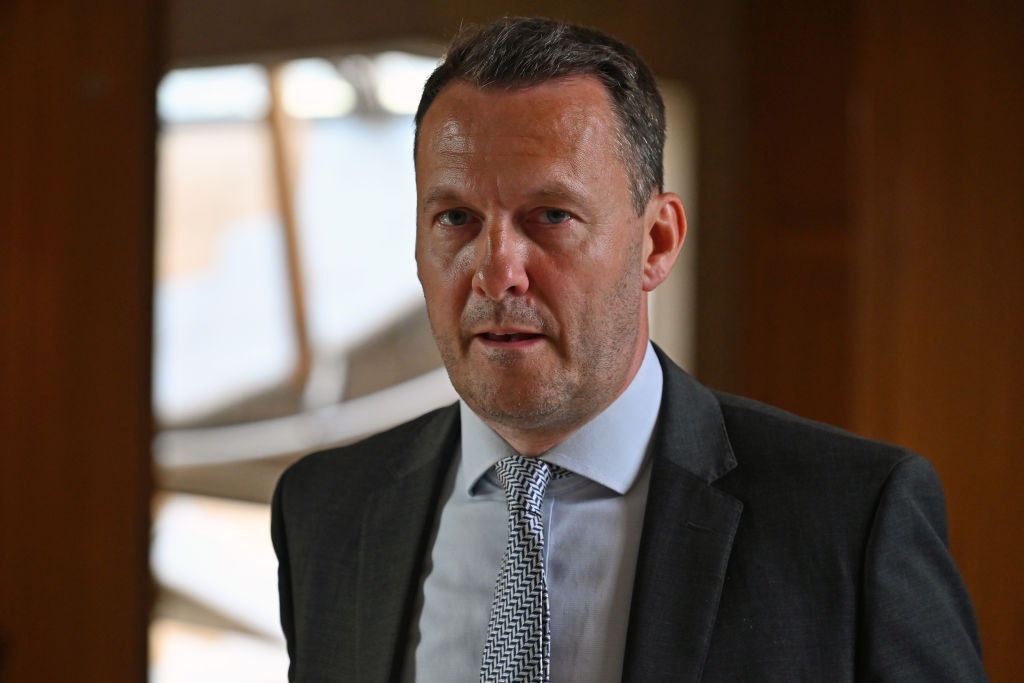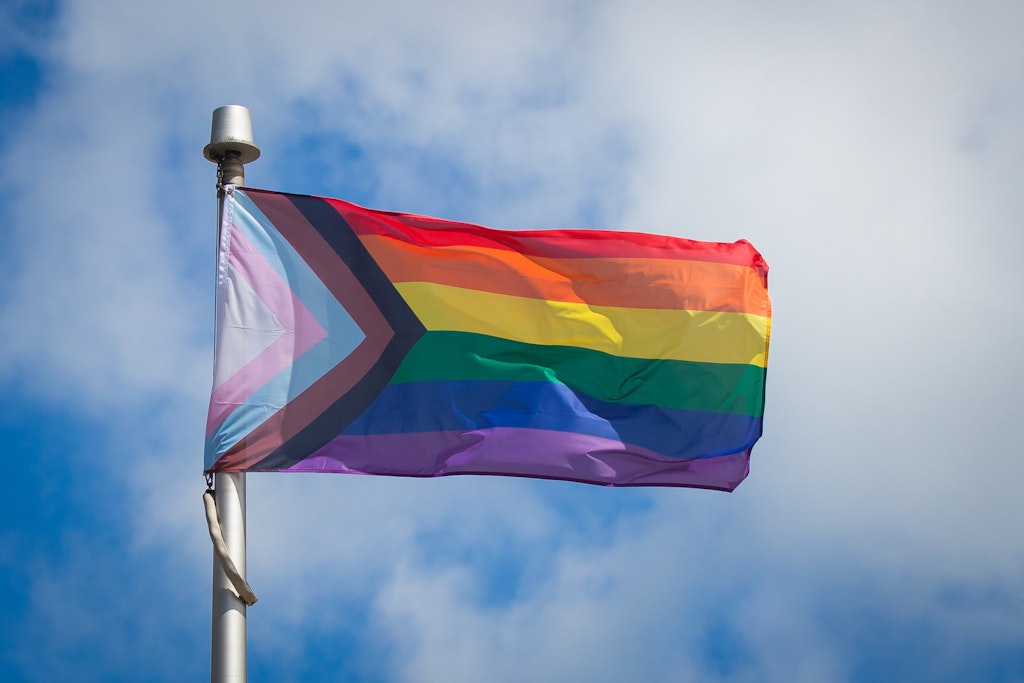Women in prisons deserve better
Classifying male criminals as women adds insult to injury
What is a male murderer and cat killer doing in female crime statistics? On February 28th, The Telegraph reported that the crimes of Scarlet Blake, a 26-year-old man who identifies as female, will be recorded as being committed by a woman. Blake, described by a judge as having “an obsession with harm and death”, mutilated a cat he found on the street and murdered a stranger named Jorge Martin Carreno as he was walking alone at night.
“We are required to record the gender of individuals when they are brought into our custody. Blake identified himself as a female when in custody. As such, Blake is recorded as female on our crime recording system,” said a Thames Valley Police spokesman. There simply are not that many female murderers, so the blurring of crime statistics by adding males into their category can have a drastic effect. Stories such as the Scarlet Blake case highlight how thoroughly dehumanising the prison system is for women.
I should know, because I work in a women’s prison. I am a frontline worker, supporting women with crack and heroin misuse issues, and part of my cohort includes women coming out of prison and into the community. These are some of the most courageous and strongest women I have ever met, but horrific stories such as the Scarlet Blake case make me question the humanity of decision-makers who pile on unfairness on top of unfairness on the backs of women who, more often than not, have been struggling to cope with life’s hardships and looking for a way to get through life.
Society desperately needs more understanding about why women end up in prison, how they are treated once they are inside and how this cycle can be broken, but this thoughtful analysis will elude us if policy makers tamper the statistics. There are fewer examples that highlight the unfairness of “gender identity” policies towards women more clearly than the effect it has on women in prison and the corruption of crime statistics. As we raise awareness of these policies, we must also call for overall reform of the way prisons treat women.
Sending Blake to a male prison represents a significant step but it is simply not enough. Last February, the Ministry of Justice instituted a policy declaring that male offenders who committed violent crimes, including sex crimes, would be excluded from female prisons moving forward. And clarifying that “transgender women with male genitalia will no longer be held in mainstream women’s prison,” but men do not stop being male simply because they lack a penis, the same way that women do not stop being female if we undergo a mastectomy. Human beings are not Legos and our biological sex inhabits every cell of our bodies.
Unsurprisingly, too many abusive men, including paedophiles, are taking advantage of this golden opportunity to rig the system further. But sex desegregation and the importance of creating a female-only environment to safeguard women go further than drawing a line at sex offenders. After all, with an appalling 2 per cent conviction rate for rape, we can be certain that there are far more rapists and abusers walking among us without a conviction than statistics would lead us to believe. Male staff members can also pose a safeguarding risk for women in prison — such as in the case of then acting governor of HMP Downview, who in 2011 was convicted of sexually exploiting vulnerable residents.
Even before they reach adulthood, girls placed in young offenders’ institutions are subjected to detrimental treatment at the hands of men. Last week, The Guardian reported that an underage resident had been forcibly stripped by male prison staff at the Wetherby Young Offenders Institution. Couldn’t this have been done by female staff members? Out of 165 residents, only 7 of them are girls and with regrettable cases like this, their needs for privacy, safety and dignity are not being considered by a system that punishes them while disregarding them.
Once they reach adulthood, women in prison are often treated as fallen women — dehumanised and omitted by society at a systemic level. Around the world and contrary to United Nations guidelines about best practice regarding prisons, it has become standard to automatically place male prisoners who identify as women in the female state, with no regard to what the women want. Most of them are victims of male violence and most are also there for non-violent crimes such as shoplifting (as opposed to the statistics for trans crime). According to the Women in Prison charity, three out of five women sent to prison are there for less than six months. But even a short sentence for petty crime can have disproportionately detrimental impact on a woman life leading to her losing her job, losing her house and the custody of her children.
The prison system is particularly brutal for pregnant women, with one gruesome example out of HMP Bronzefield (where I tend to visit my incarcerated clients) seeing a teenager give birth alone in her cell and cutting the umbilical cord with her teeth after nobody heard her desperate pleas for assistance. Her baby, a girl she had named Aisha, died.
Rather than question why pregnant women, who are mostly there for crimes linked to poverty, should be housed in a prison cell, the response from the authorities has been to issue rape alarms to ensure that women are heard during emergencies, such as unexpected childbirth.
Richard Garside, director of the Centre for Crime and Justice Studies, has argued that it should be female prisoners themselves who decide who they share their spaces with. He shared:
Prisons systematically strip prisoners of agency and choice in their lives. For female survivors of male violence – which is most women in prison – having agency and choice about which men you associate with, and under what circumstances, is very important for recovery and healing.
Giving female prisoners the right to decide which male prisoners, if any, they allow into their spaces would be an important step in the direction of greater prisoner agency and choice. It would also be a clear sign that the needs and interests of female prisoners are being taken more seriously than is currently the case.
Why should women be used as puppets for other people’s “gender identity” games?
Sometimes the fact that part of my job includes women in prison affects how people treat me too. Because people know that I work with women who are disposable, and that I make almost no money, I myself am often treated with contempt by people who see themselves as my betters. I believe that this reflects the snobbishness influencing far too many policy makers when making careless decisions about whether to place predators and abusers in close quarters with victims of male violence. What are the women going to do, complain? To whom?
Even in feminism, I hear countless people portray themselves as being “on the frontlines” in the hopes that the sheer graft and grittiness of the job rubs off on their far posher and cushier positions. Yet there is nothing glamorous about being a frontline worker. Too many of us get paid crumbs in a thankless field where we are often treated like dirt by the same institutions that so catastrophically fail the service users we want to support. Nowhere is this neglect more evidence than in the prison system.
Women in prison are trapped — at the mercy of others, with nowhere to escape. Doing my job, it feels taxing to step in and out of women’s prisons because I know I have merely a visiting role in one of the most disempowering spaces women can inhabit. The ever-present awareness that every interaction is mediated through multiple authorities feels constraining and suffocating. The guilt of knowing that far too many women who took a bad turn in life remain trapped while you get to dip in and out of their confinement follows you home for days.
The charity Women in Prison describes prison as “a system based on punishment, disempowerment and control.” The pressure of this constrictive environment is not merely physical, it has a detrimental impact at a psychological level. Despite this, the women I meet as part of my role have found ways to use their voices and gather astonishing strength to advocate for themselves. But why should women’s endurance be tested to their breaking point? Why should their stress and anxiety levels be pushed to such an unbearable brink? For indifferent policy makers and reckless campaigners to use women in prison as a canvas on which to project experimental and unnecessary “gender identity” policies is not simply cruel, it is torture.
Enjoying The Critic online? It's even better in print
Try five issues of Britain’s most civilised magazine for £10
Subscribe














